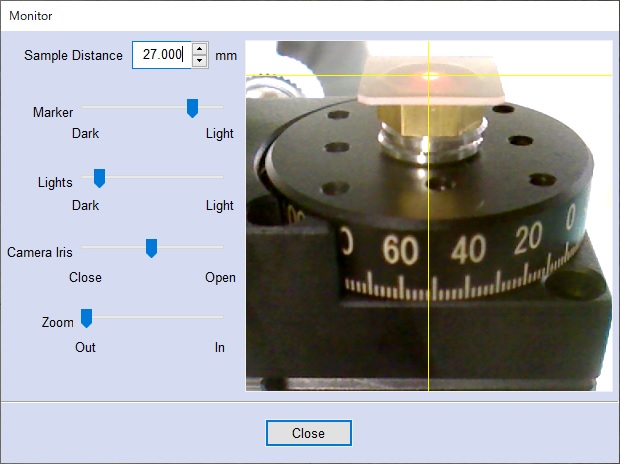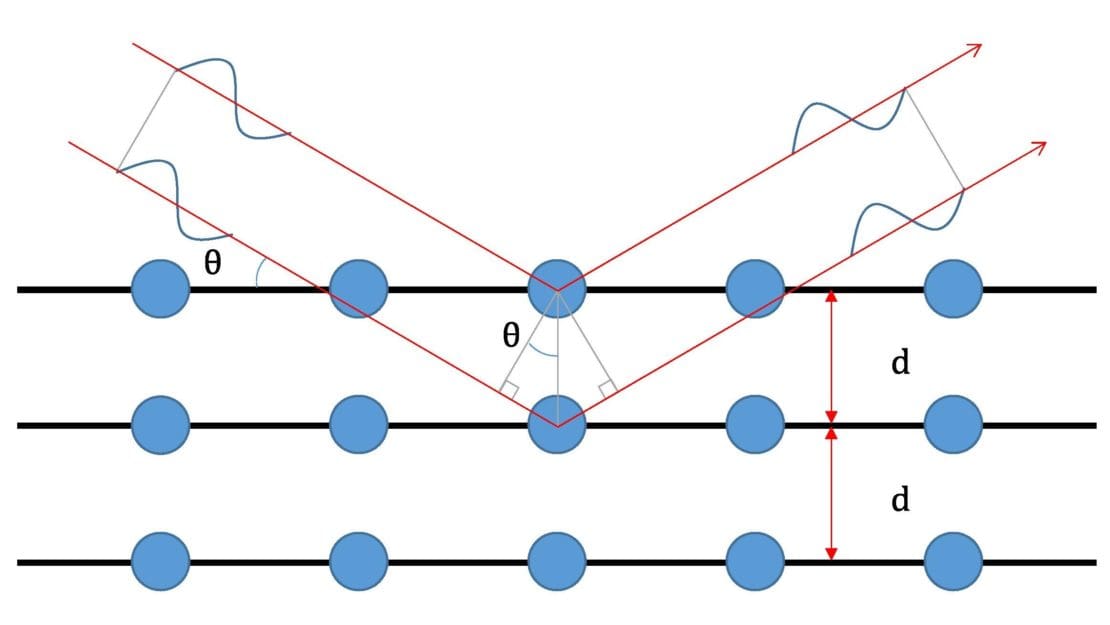
Table of Contents
Since 1912 when Max von Laue utilized it for the first time, the Laue method has been used to determine crystalline material structures and orientations with great success through X-ray diffraction techniques.
How Does It Work?
The Laue diffraction method uses constructive interference from atomic planes within crystalline lattices during X-ray scattering to investigate the internal structures of crystals.
The principle behind the Laue method is Bragg’s Law, which establishes a relationship between the X-ray wavelength, the angle of incidence (θ), and the distance between crystal planes (d).
When X-rays interact with a crystal, they are diffracted in various directions based on these factors. This pattern of diffracted X-rays can then be captured, typically on a photographic film, creating a unique “fingerprint” that reveals the crystal’s structure.
Back Reflection Versus Transmission Laue
The Laue method can be split into two categories: back reflection and transmission. Let’s look closer at each category.
Back Reflection
In back reflection Laue, a beam of “white” (i.e., broad spectrum) X-rays is incident on a stationary single crystal. As the X-rays interact with the crystal planes, they are reflected back, generating a diffraction pattern.
Each crystal plane in a particular orientation produces a unique pattern due to the interference of X-rays, creating characteristic spots on a detection medium, such as an imaging device or photographic film, located behind the crystal.
This method is particularly useful for thick crystal samples, as it doesn’t require the X-rays to transmit through the entire sample.
Transmission
The transmission mode of the Laue diffraction method is focused on analyzing X-rays that are transmitted through the crystal. In this method, a beam of white X-rays is incident on a thin crystal sample.
As the X-rays pass through the crystal, they interact with the crystal planes and are diffracted in different directions based on Bragg’s Law.
This technique requires thin crystal samples to ensure X-rays can penetrate and transmit through the entire sample.
Choosing the Right Technique
The choice between these two methods depends heavily on the thickness of the crystal sample.
The back reflection method, which observes X-rays reflected off the crystal planes, is suitable for thick crystal samples.
On the other hand, the transmission method requires X-rays to pass through the crystal and requires thin samples.
Bragg’s Law Versus Laue Method

Bragg’s Law is a fundamental scientific equation that describes the condition for X-ray diffraction by a crystal lattice. It states that constructive interference of X-rays occurs when the path difference of X-rays scattered by successive planes of atoms in a crystal is an integral multiple of the X-ray wavelength.
The Laue Method is a practical application of Bragg’s Law. This technique uses a beam of white (broad spectrum) X-rays to analyze the structure of a crystal.
The incident X-rays interact with the crystal planes and are diffracted, producing a pattern that is then captured on a detector. The diffraction pattern reflects the crystal structure, as each set of planes in the crystal diffracts X-rays at a specific angle, creating a unique fingerprint/pattern.
Limitations
While the Laue method is an essential tool in crystallography, it does have some limitations:
1. It’s Best Suited for Single Crystal Samples
The Laue method relies on the order and periodic arrangement of atoms within a single crystal to produce a discernible diffraction pattern.
Polycrystalline materials, composed of many small crystallites in different orientations, would generate a complex pattern that could be challenging to interpret using this method.
This complexity increases with the number of crystallites, each potentially contributing to the diffraction pattern.
2. A Large Crystal Size Is Needed
The Laue method requires a sufficiently large crystal so the incident X-ray beam encounters a consistent crystal structure.
Small crystals, or crystals with significant variations in their structures, may produce weak or inconsistent diffraction patterns, making the results difficult to interpret.
Learn More From Pulstec
Pulstec is a globally recognized manufacturer of residual stress analyzers. We’re proud to announce our newest product, the s-Laue Single Crystal Orientation System, which uses the back reflection Laue method to determine single crystal orientation. Our product is designed to deliver fast (within 60 seconds) and accurate measurements and allows for a broad range of sample sizes and shapes, expanding its usability beyond traditional Laue equipment.
Contact us today to learn more about the benefits of the Laue method or to request product information for our new single crystal orientation system.

